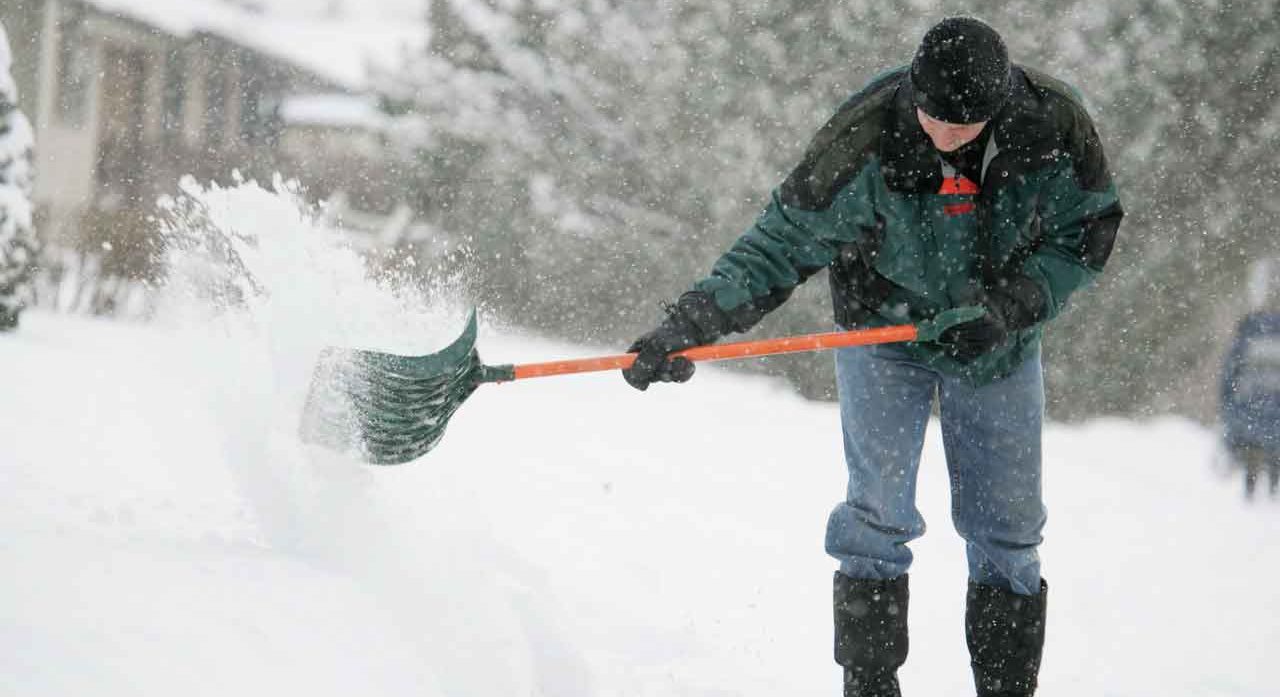Smart Snow Shoveling Safety Tips

If you haven’t exercised in a while, carefully consider whether you’re fit enough to lift that shovel. Know our snow shoveling safety tips.
The snow blanketing your sidewalk and driveway needs to be cleared, but if you’ve been sedentary all summer, you might not be up for the job. Going from zero to full throttle with one sweep of the shovel could be dangerous.
Why shoveling snow can be dangerous
Around 11,500 people end up in emergency rooms each year from shoveling-related injuries and illnesses, according to a study by the Center for Injury Research and Policy at Nationwide Children’s Hospital. More than half of the complaints are muscle strains, sprains, bumps, and bruises, followed by cuts and fractures. Heart attacks and other heart-related issues make up only 7 percent of emergency room visits, but they cause 100 percent of shoveling-related deaths. Men over age 55 are at particularly high risk of having a heart attack while clearing snow.
Picking up piles of snow put double strain on your heart. “Not only is the heart’s workload increased due to shoveling snow, but cold temperatures also add to the chances of a heart attack in at-risk individuals,” says Gary Smith, MD, DrPH, the study’s lead author and director of the center at Nationwide Children’s Hospital. When the mercury drops, blood pressure rises, making the heart work harder. Clots in the arteries that can cause a heart attack are also more likely to form in cold weather.
People with existing heart disease or risks for it should ask someone else to clear their driveway and sidewalks. If that’s not an option, get an expert’s advice. “We recommend talking to your doctor before you shovel snow, especially if you do not exercise regularly, have a medical condition, or are in a high risk group,” Smith advises.
Snow shoveling safety tips
Safe snow removal starts with buying the right equipment. An ergonomically designed shovel will help you avoid bending or lifting as much.
Before you dig into the snow, warm up for about 5 minutes by stretching or walking in place. Dress in layers you can shed if you get too warm. The outside layer should be waterproof and weather- resistant. Wear rubber boots with slip-resistant soles to prevent a fall.
Get outside early, when the snow is still light and fluffy. Once ice starts to accumulate it will get much heavier. Shovel one section at a time, rather than trying to tackle your entire sidewalk and driveway at once.
Don’t work until the point of exhaustion. Take frequent breaks. Shovel for a few minutes, and then go inside to rehydrate. Drink water, not caffeine, which can put extra strain on your heart.
When you shovel, push the snow out of the way, rather than lifting it. Pushing puts less strain on your heart and back. Another way to protect your back is by bending your legs to power the shovel.
Always listen to your body. Achiness in your arms or back could be a sign that your muscles are working hard, but it could also warn of a heart attack. Stop what you’re doing right away and call for help if you also have hallmark symptoms like chest pain or pressure, shortness of breath, nausea, sweating, or dizziness.
Adults aren’t the only ones at risk for a shoveling incident. Kids can get hurt too, most often when they fool around or play with their shovel. “Shoveling snow can be a great outdoor activity for kids; however, it is important for parents to teach children the correct way to shovel snow and remind them that shovels are not toys,” said Smith, who is also a professor of pediatrics in The Ohio State University College of Medicine. Always keep an eye on kids while they’re outside.
One big upside to shoveling — aside from the paths it clears — is the exercise it provides. Just a half-hour of scooping snow can burn 250 calories and meet your daily activity requirements. Keep up with exercise recommendations by adding other forms of fitness to your winter schedule. Walk the mall, do sit-ups and squats in front of the TV, or play basketball at an indoor gym to keep yourself fit. Then you’ll be in better shape to tackle the snow the next time it piles up.
Updated:
March 30, 2020
Reviewed By:
Janet O’Dell, RN